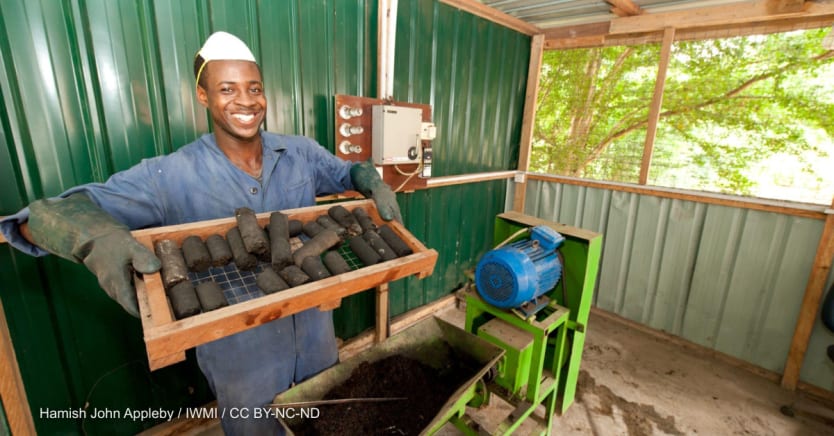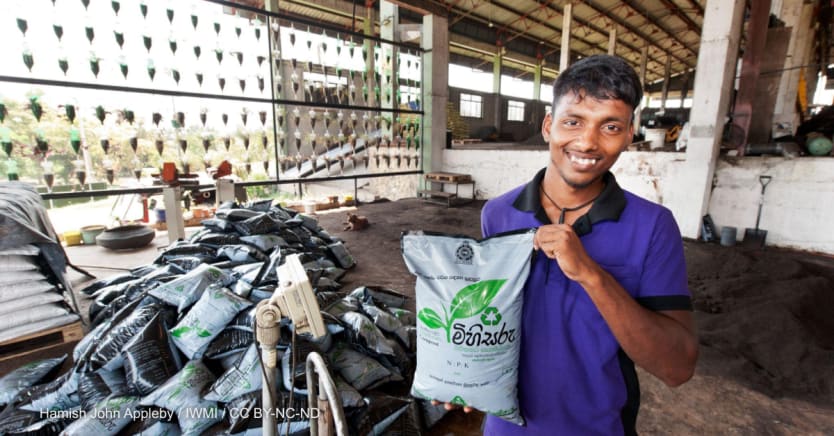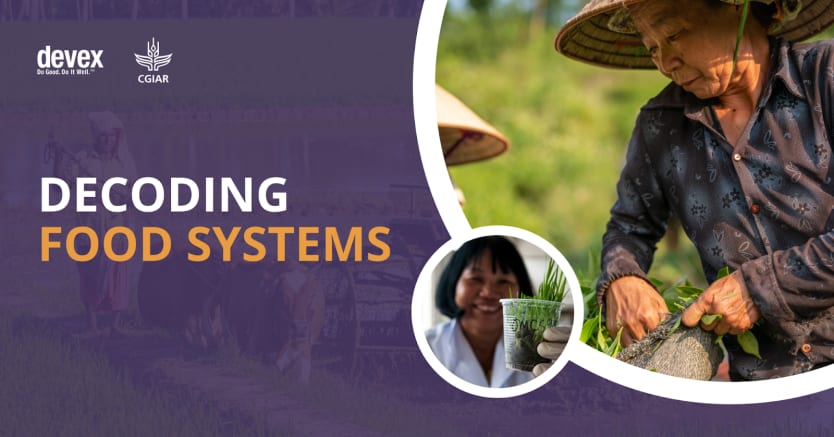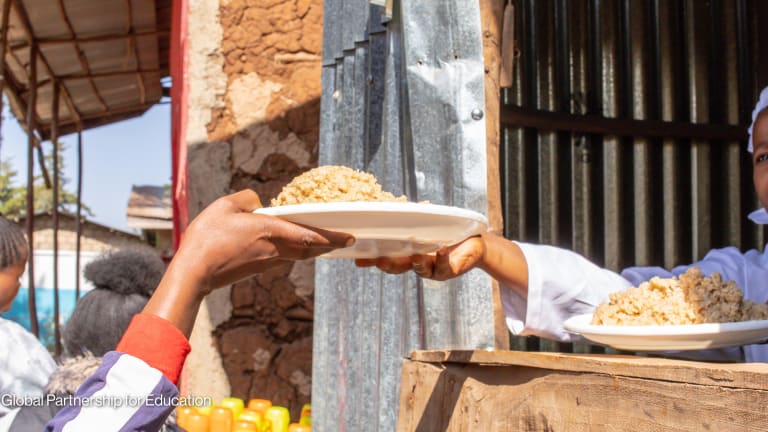
From crop residues like seed pods and stalks to animal manure, agricultural production generates significant waste. Estimates suggest we produce 1 billion tons of agricultural waste globally every year, with agriculture contributing to around one-fifth of global greenhouse gas emissions.
“So far our agriculture research has been [designed] to increase productivity of crops. But [as to] how the waste of agriculture could be used, we have given little importance to that,” said Himanshu Pathak, Ph.D., director general of CGIAR’s International Crops Research Institute for the Semi-Arid Tropics, or ICRISAT.
Now, Pathak said, we must rethink the way we view biodegradable waste by leveraging new research, technology, and shared knowledge. He believes that finding ways to utilize waste can address growing challenges around food security, environmental sustainability, and resource scarcity.
That’s exactly what the Circular Bioeconomy, or CBE, Innovation Hub — a multistakeholder one-stop shop for training, research, advisory support, collaboration, and knowledge sharing — aims to do.
Established by CGIAR in collaboration with the BAIF Development Research Foundation and hosted by CGIAR’s International Water Management Institute, or IWMI, the hub gives businesses, investors, and policymakers a platform for turning ideas into market-ready products and services. Its objective is to accelerate the circular bioeconomy — a model that encourages producers and consumers to rethink, refuse, reduce, reuse, repair, regift, and recycle existing products and natural resources to minimize waste and lessen our reliance on nonrenewable materials.
The hub was originally established in India but now also operates in Vietnam and Ghana, with potential to expand to other regions.
We spoke with Pathak about the opportunities such research solutions present in reducing the environmental impact of food systems and, at the same time, creating economic opportunities.
This conversation has been edited for length and clarity.
Why is a circular economy important in the context of agrifood systems?
ICRISAT has a mission of transforming dryland agriculture, which provides livelihoods to more than 2 billion people in more than 55 countries. Dryland soils do not only need water; they also need nutrients and carbon. It’s important that every gram of agricultural waste goes back into dryland soil, whether through conservation agriculture, regenerative agriculture, compost, biochar, and so on — that’s one priority.
Alternatively, from this waste, dryland farmers can also produce a lot of valuable resources — biofuel, livestock feed, even human feed after processing, and household materials.
Other than environmental benefits, what are other advantages of the CBE model?
There are also economic benefits — we can create new industrial inputs and jobs, generate revenue from waste materials, and reduce reliance on chemical and artificial resources.
There are also lots of social benefits, including improving waste management practices, promoting sustainability, and contributing to a cleaner environment.

What type of research guides the CBE model?
A good amount of research has gone into how to make biofertilizer from agricultural waste. We are trying to improve the quality of manures by adding chemical fertilizers like phosphorus, rock phosphate, potassium, and other materials so that it becomes enriched compost.
The second [research focus] is generating biofuel. Slowly, many countries are shifting towards biofuel, where crop residues are utilized to produce ethanol — in many countries, blending diesel or petrol with ethanol has been made a mandatory practice.
The next area of research is biochar, where crop residue is burned under anaerobic conditions with controlled temperature so that the carbon becomes resistant to decomposition. Once biochar is produced, it will remain in the soil for years to come — and building soil organic carbon is extremely important.
The CBE Innovation Hub has already been hugely successful, particularly in India where students are learning to turn food waste into biogas and over 400 farmers have received training in biochar and biogas business models. How can similar initiatives be applied in other contexts and countries?
The government of India has come out with some very important programs — one of which is Waste to Wealth [a mission aimed at strengthening India’s waste management system by adopting innovative solutions to achieve zero waste] — and lots of incentives, capacity building, and training programs are also organized by various organizations, institutes, and universities. At ICRISAT, we also run training programs. Capacity building, providing technologies, and “hand-holding” for some time is extremely important.
These lessons can be upscaled in India and taken to many other countries, particularly African or other Asian countries where there are similarities in traditional practices.
Creating wealth from waste is extremely important to make agriculture sustainable, make more income [from] agriculture, and secure the livelihoods of small and marginal farmers. We cannot depend only on the main product.
Visit Decoding Food Systems — a series amplifying stories from CGIAR’s Flagship Report, Insight to Impact, and exploring the innovative solutions that demonstrate transformative changes on the horizon.
This content is sponsored by CGIAR as part of our Decoding Food Systems series. Click here to learn more.









